Similar presentations:
Linear scan. Register allocation
1. Linear Scan Register Allocation
Massimiliano Poletto (MIT)and
Vivek Sarkar (IBM Watson)
November 29,
Christopher Tuttle
1
2. Introduction
• Register Allocation: The problem of mapping anunbounded number of virtual registers to physical ones
• Good register allocation is necessary for performance
– Several SPEC benchmarks benefit an order of magnitude from
good allocation
– Core memory (and even caches) are slow relative to registers
• Register allocation is expensive
– Most algorithms are variations on Graph Coloring
– Non-trivial algorithms require liveness analysis
– Allocators can be quadratic in the number of live intervals
November 29,
Christopher Tuttle
2
3. Motivation
• On-line compilers need generate code quickly– Just-In-Time compilation
– Dynamic code generation in language extensions (‘C)
– Interactive environments (IDEs, etc.)
• Sacrifice code speed for a quicker compile.
– Find a faster allocation algorithm
– Compare it to the best allocation algorithms
November 29,
Christopher Tuttle
3
4. Definitions
• Live interval: A sequence of instructions, outsideof which a variable v is never live.
(For this paper, intervals are assumed to be contiguous)
• Spilling: Variables are spilled when they are stored
on the stack
• Interference: Two live ranges interfere if they are
simultaneously live in a program.
November 29,
Christopher Tuttle
4
5. Ye Olde Graph Coloring
• Model allocation as a graphcoloring problem
• Nodes represent live ranges
• Edges represent interferences
• Colorings are safe allocations
• Order V2 in live variables
• (See Chaitin82 on PLDI list)
November 29,
Christopher Tuttle
5
6. Linear Scan Algorithm
• Compute live variable analysis• Walk through intervals in order:
– Throw away expired live intervals.
– If there is contention, spill the interval that ends
furthest in the future.
– Allocate new interval to any free register
• Complexity: O(V log R) for V vars and R registers
November 29,
Christopher Tuttle
6
7. Example With Two Registers
• 1. Active = < A >November 29,
Christopher Tuttle
7
8. Example With Two Registers
• 1. Active = < A >• 2. Active = < A, B >
November 29,
Christopher Tuttle
8
9. Example With Two Registers
• 1. Active = < A >• 2. Active = < A, B >
• 3. Active = < A, B > ; Spill = < C >
November 29,
Christopher Tuttle
9
10. Example With Two Registers
November 29,
1. Active = < A >
2. Active = < A, B >
3. Active = < A, B > ; Spill = < C >
4. Active = < D, B > ; Spill = < C >
Christopher Tuttle
10
11. Example With Two Registers
November 29,
1. Active = < A >
2. Active = < A, B >
3. Active = < A, B > ; Spill = < C >
4. Active = < D, B > ; Spill = < C >
5. Active = < D, E > ; Spill = < C >
Christopher Tuttle
11
12. Evaluation Overview
• Evaluate both compile-time and run-time performance• Two Implementations
– ICODE dynamic ‘C compiler; (already had efficient allocators)
• Benchmarks from the previously used ICODE suite (all small)
• Compare against tuned graphcoloring and usage counts
• Also evaluate a few pathological program examples
– Machine SUIF
• Selected benchmarks from SPEC92 and SPEC95
• Compare against graphcoloring, usage counts, and
secondchance binpacking
• Compare both metrics on both implementations
November 29,
Christopher Tuttle
12
13. Compile-Time on ICODE ‘C
• Usage Counts, Linear Scan, and Graph Coloring shown• Linear Scan allocation is always faster than Graph Coloring
November 29,
Christopher Tuttle
13
14. Compile-Time on SUIF
Linear Scan allocation is around twice as fast than Binpacking
– (Binpacking is known to be slower than Graph Coloring)
November 29,
Christopher Tuttle
14
15. Pathological Cases
N live variable ranges interfering over the entire program execution
Other pathological cases omitted for brevity; see Figure 6.
November 29,
Christopher Tuttle
15
16. Compile-Time Bottom Line
• Linear Scan– is faster than Binpacking and Graph Coloring
– works in dynamic code generation (ICODE)
– scales more gracefully than Graph Coloring
• … but does it generate good code?
November 29,
Christopher Tuttle
16
17. Run-Time on ICODE ‘C
Usage Counts, Linear Scan, and Graph Coloring shown
Dynamic kernels do not have enough register pressure to illustrate differences
November 29,
Christopher Tuttle
17
18. Run-Time on SUIF / SPEC
Usage Counts, Linear Scan, Graph Coloring and Binpacking shown
Linear Scan makes a fair performance trade-off (5% - 10% slower than G.C.)
November 29,
Christopher Tuttle
18
19. Evaluation Summary
• Linear Scan–
–
–
–
is faster than Binpacking and Graph Coloring
works in dynamic code generation (ICODE)
scales more gracefully than Graph Coloring
generates code within 5-10% of Graph Coloring
• Implementation alternatives evaluated in paper
– Fast Live Variable Analysis
– Spilling Hueristics
November 29,
Christopher Tuttle
19
20. Conclusions
• Linear Scan is a faster alternative to GraphColoring for register allocation
• Linear Scan generates faster code than similar
algorithms (Binpacking, Usage Counts)
• Where can we go from here?
– Reduce register interference with live range splitting
– Use register move coalescing to free up extra registers
November 29,
Christopher Tuttle
20
21. Questions?
November 29,Christopher Tuttle
21

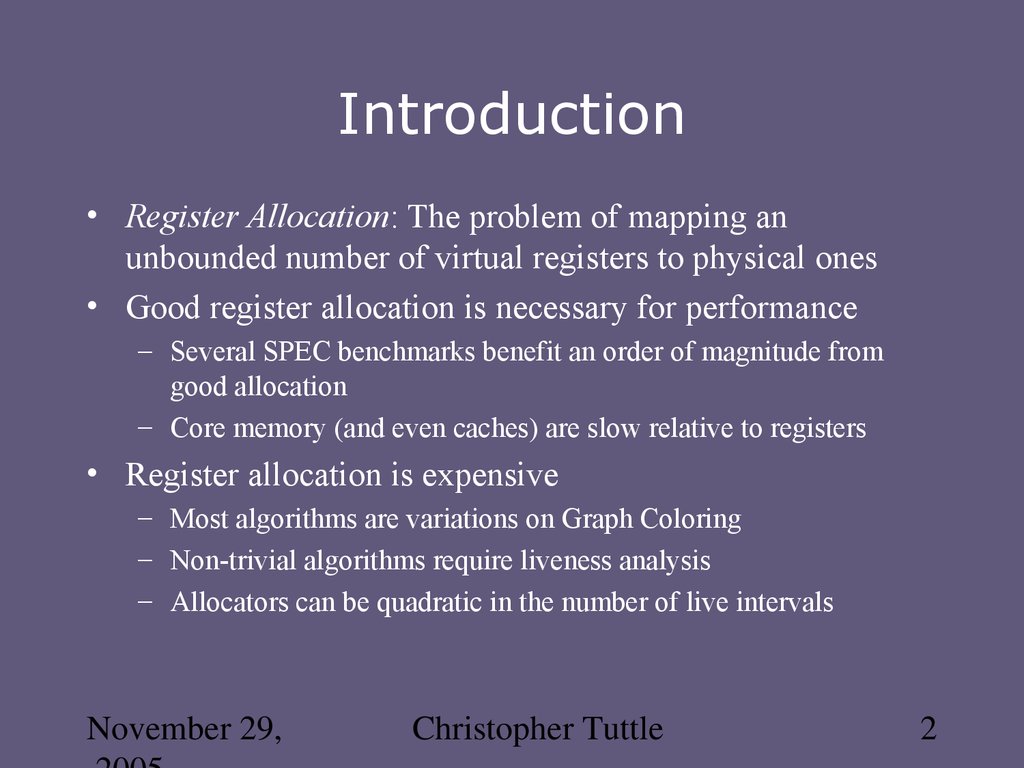


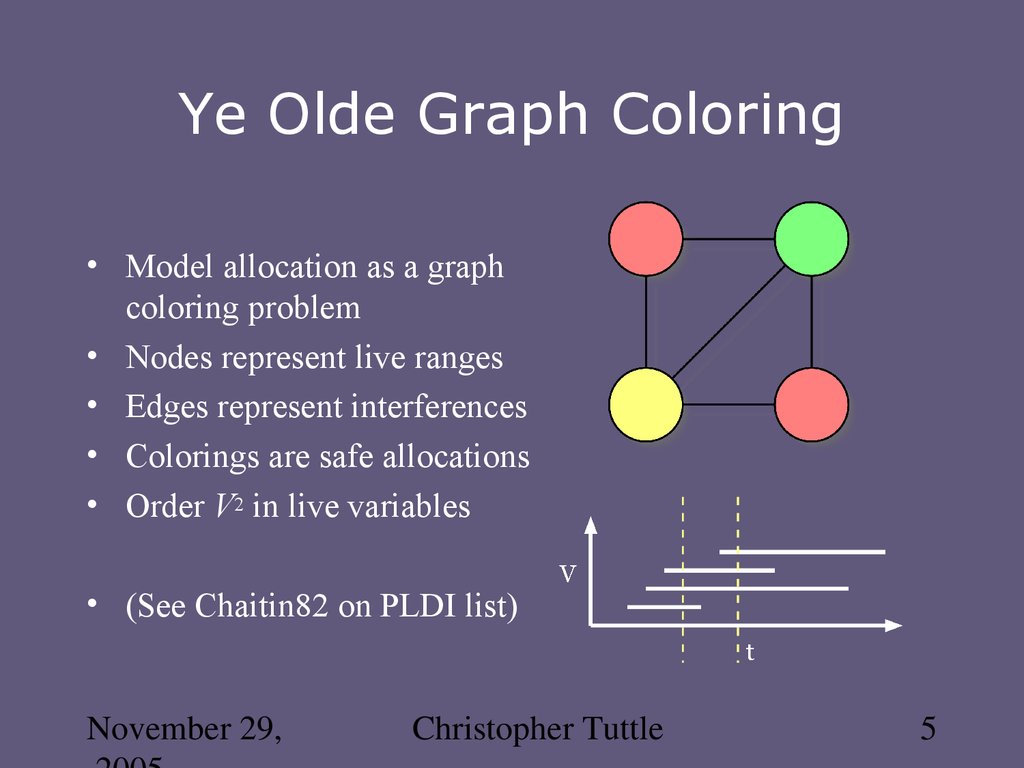

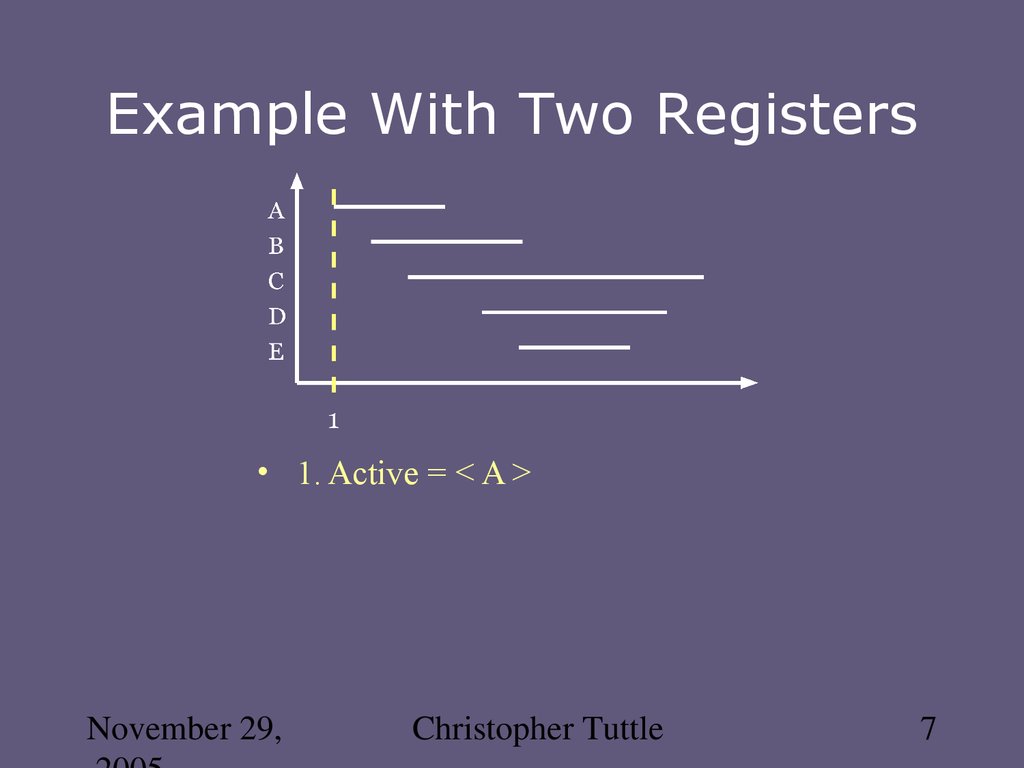
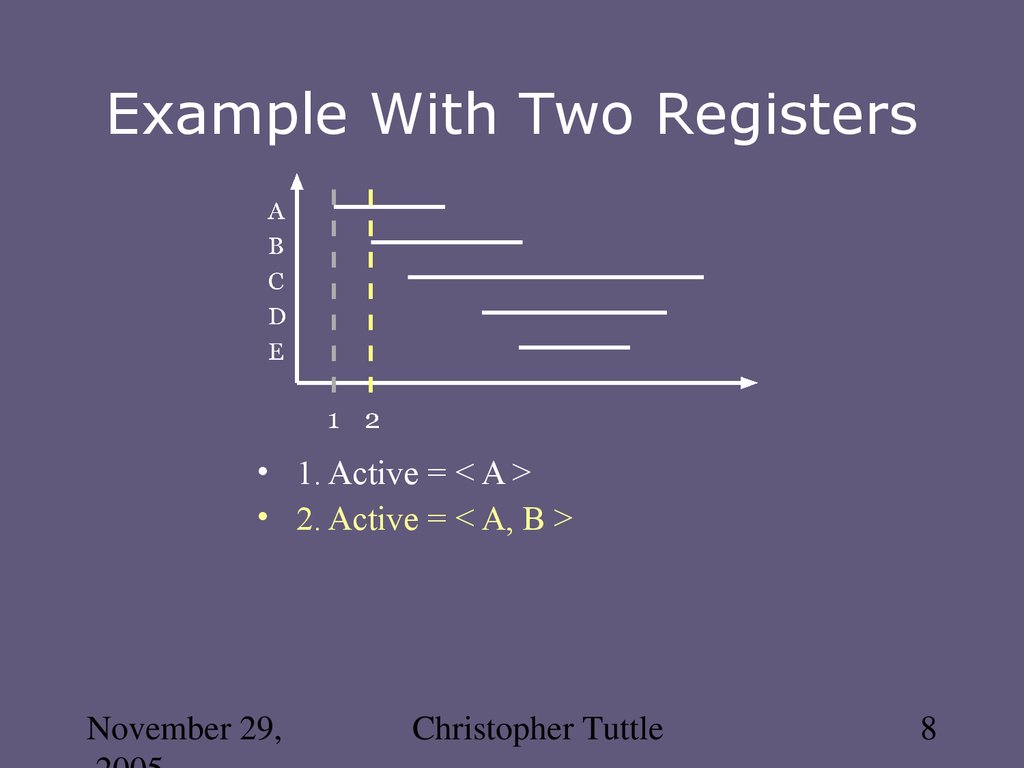


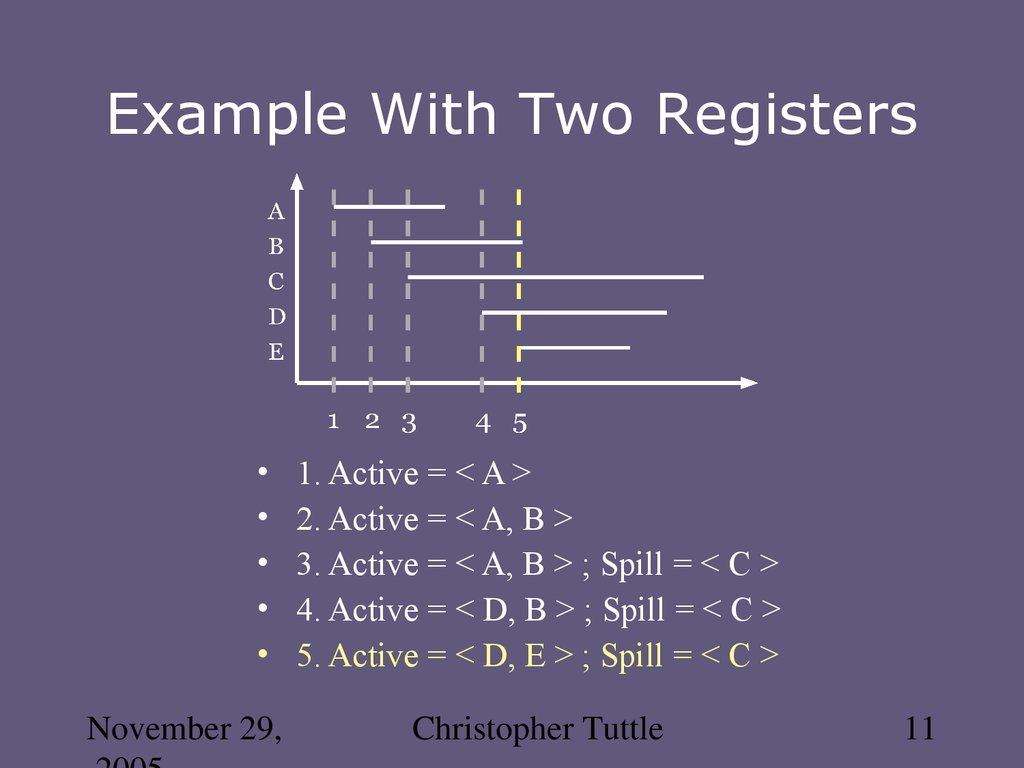
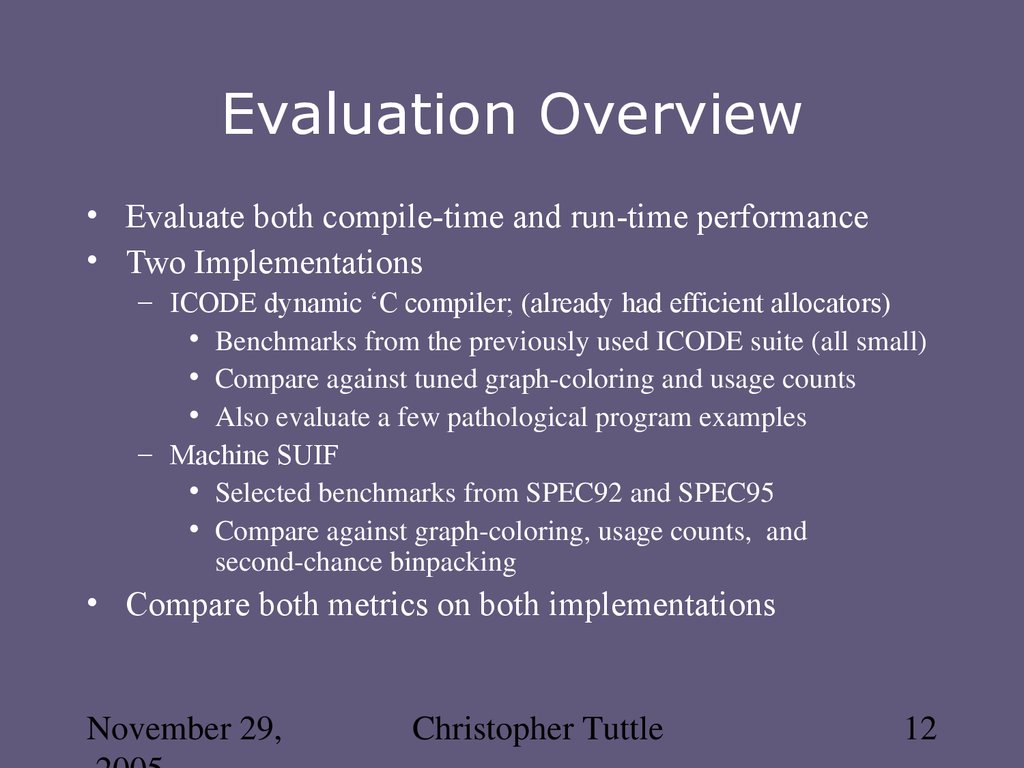
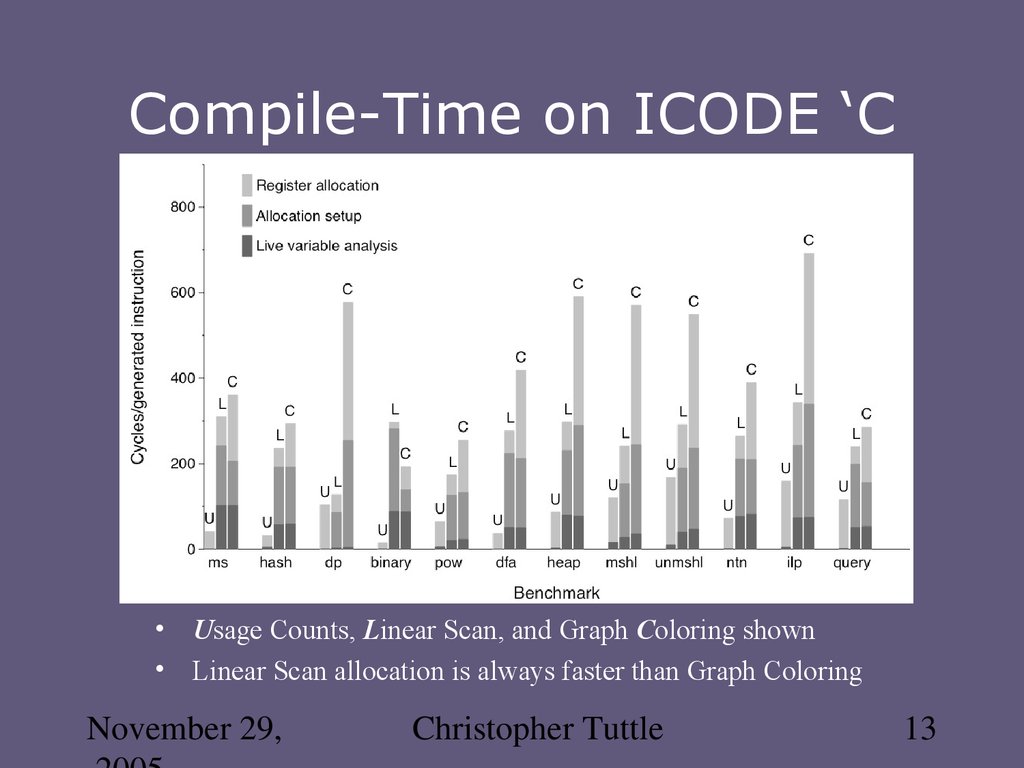
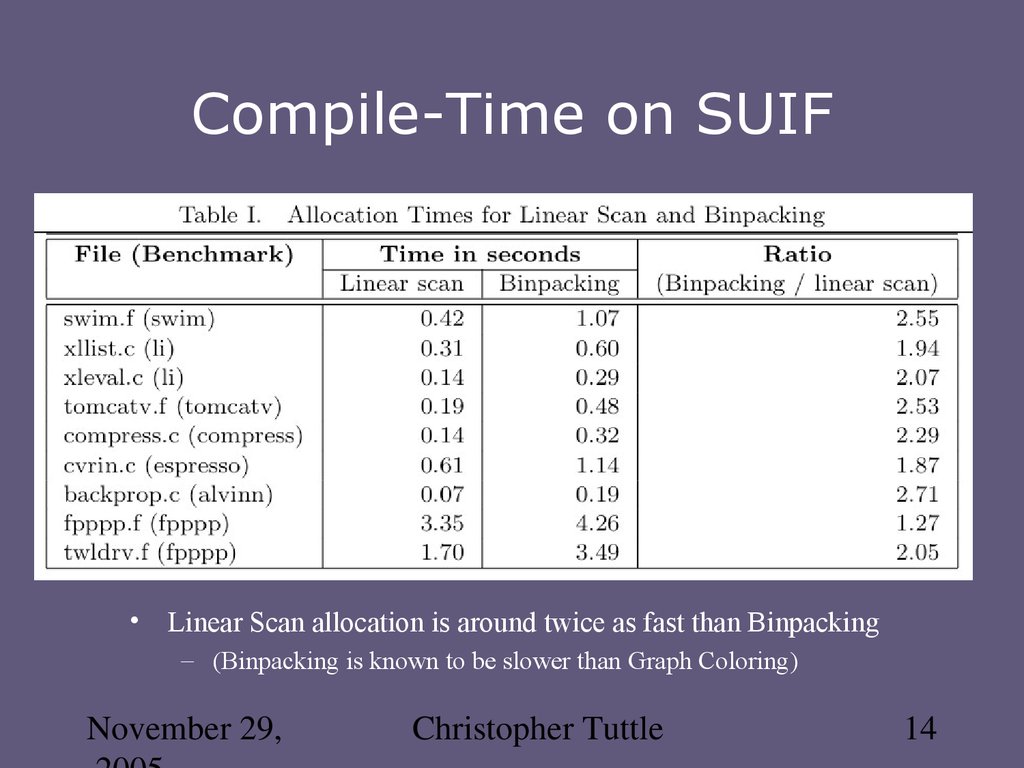
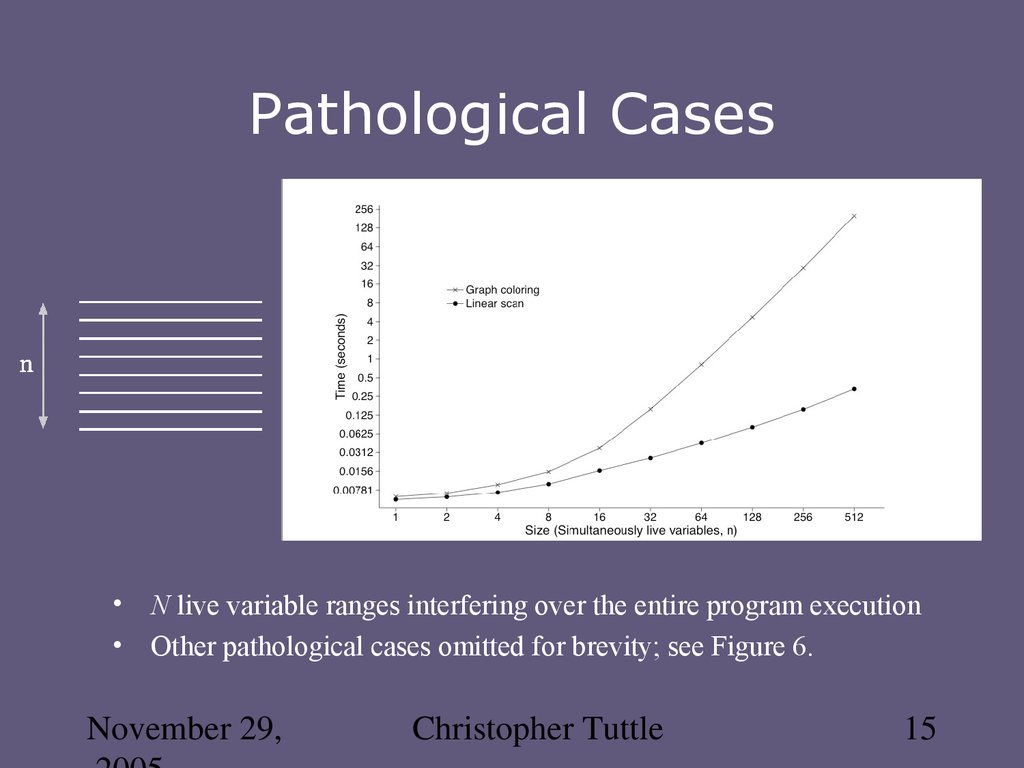
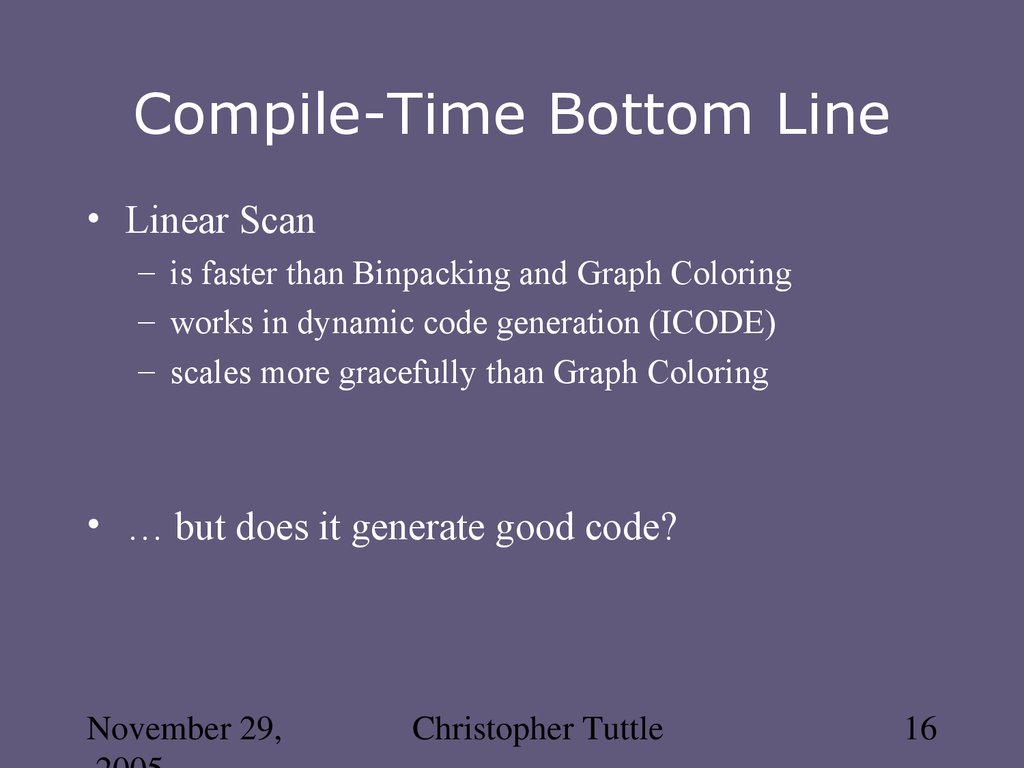

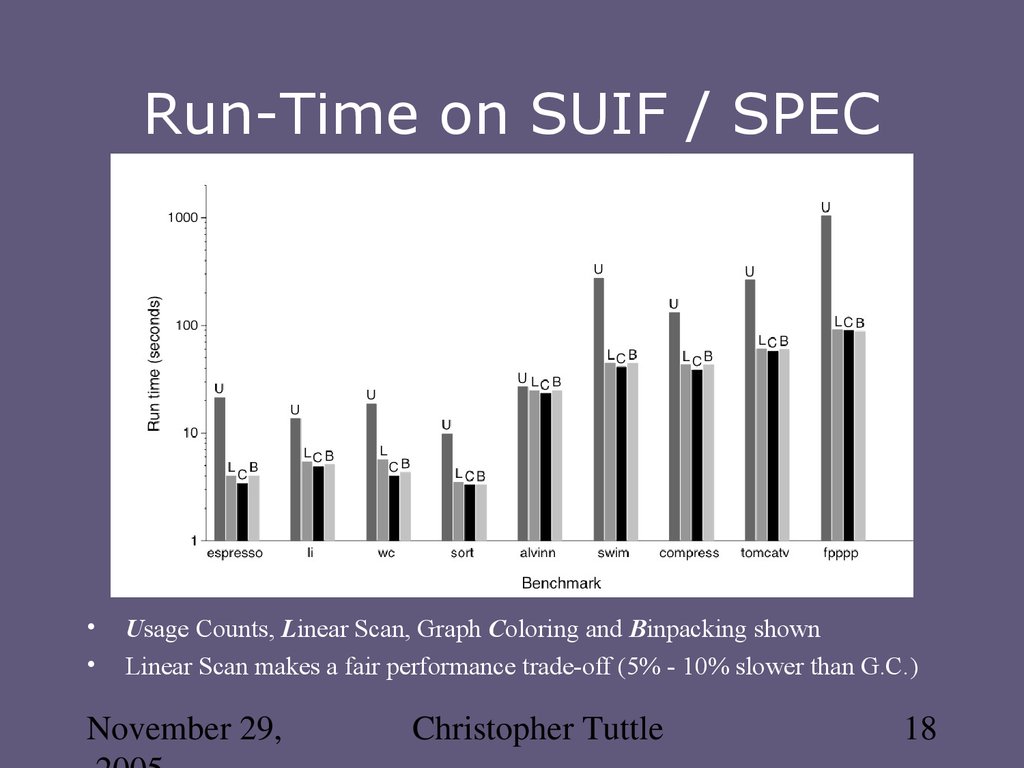
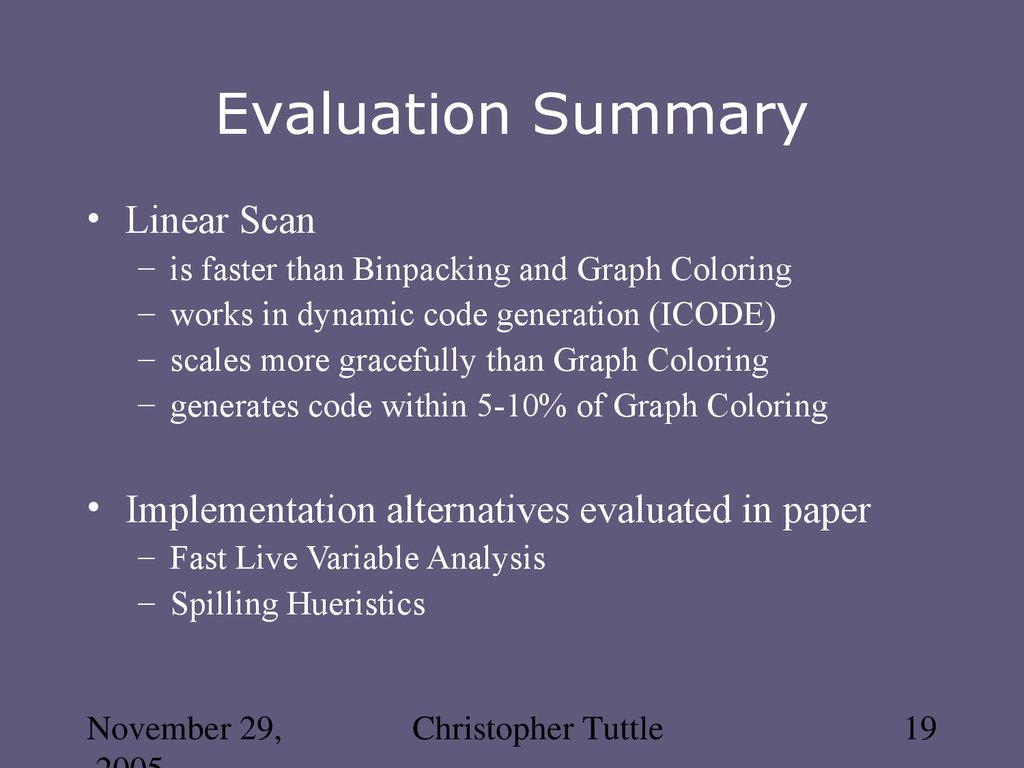


 programming
programming english
english








